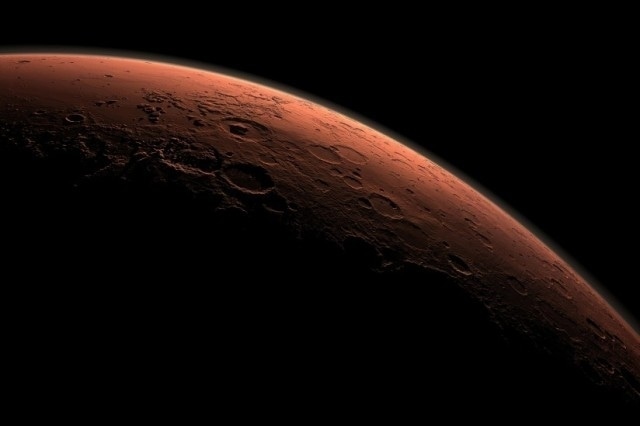Apr 6 2016
A novel 3D-printing process called selective separation sintering (SSS), has been developed by an engineer from the University of Southern California (USC). The process has won the first prize in the NASA In-Situ Materials Challenge, due to its breakthrough application in the construction of physical structures in space.
 A NASA competition mandated that competitors use materials found on Mars. (Illustration/Courtesy of NASA)
A NASA competition mandated that competitors use materials found on Mars. (Illustration/Courtesy of NASA)
The NASA competition was conducted in partnership with the Kennedy Space Center and Swamp Works to develop construction and human occupancy in space.
Behrokh Khoshnevis, who has won NASA competitions twice, states that furthering space exploration can only be done by constructing roads, blast walls, hangars, radiation shields, and landing pads on the Moon and Mars. Khoshnevis is a Dean’s Professor of Industrial & Systems Engineering, Aerospace & Mechanical Engineering and Astronautics Engineering, and Director of the Center for Rapid Automated Fabrication Technologies at the USC Viterbi School of Engineering.
Depending on construction materials sent from Earth to space is extremely expensive. In addition, utilizing resources that already exist in space could save significant time.
Rocking it
The NASA competition specified that all contestants have to identify unique concepts to further the methodology and technology of using materials existing on the Moon and Mars, such as crushed basalt rock and regolith (planetary soil), to build structures or produce objects required for futuristic missions in space.
Khoshnevis and his team used a synthetic material produced by the Johnson Space Center for the competition. This material imitates the existing material and gravel on the Moon and Mars. They used it to formulate “a robotic fabrication process”, which utilizes high melting-point ceramics, such as ordinary regolith and magnesium oxide (easily obtainable on the Moon and Mars), to create tiles that are capable of withstanding the pressure and heat of exhaust plumes of landing spacecraft.
[SSS] is a novel powder-based additive manufacturing method that can build parts of various scale out of polymers, metals, ceramics and composites.
Behrokh Khoshnevis, Engineer, USC
Contour Crafting
The novel SSS process makes use of Khoshnevis’ existing contour crafting, which is the large-scale 3D printing method that won the 2014 NASA competition grand prize. Khoshnevis explained in a NASA Innovative Advanced Concept research project that contour crafting could be utilized to blend regolith and sulfur to construct structures such as hangars and walls on the Moon and Mars.
However, the contour crafting is an extrusion-based 3D printing method and is mainly suited for large-scale monolithic structure construction, while the SSS is a powder-based technique that is suitable for constructing smaller-scale objects such as bricks, interlocking tiles, and a number of functional objects such as metallic components.
SSS is the only powder-based process that can effectively work in zero gravity condition and as such it is ideal for use in the International Space Station for fabrication of spare parts and tools.
Behrokh Khoshnevis, Engineer, USC
According to the experienced engineer it costs nearly $10,000 to launch a kilogram into low Earth orbit, and about $100,000 to transport the same quantity to the Moon. The cost will increase further if the cargo is transported to Mars. He believes that the innovation created by his team is likely to decrease the need to transport cargo from Earth, possibly saving NASA and other agencies substantial amount of funds.
It could make space pioneering more cost-effective and feasible. There are no viable, direct, high-temperature metal, ceramic or composite fabrication methods that can work in zero-gravity conditions. SSS will be the first such process.
Behrokh Khoshnevis, Engineer, USC
Advantages at hand
Khoshnevis knows there are a number of benefits with the SSS process created by his team. The benefits include speed and greater precision, and freedom from using expensive electron beam and laser technologies.
There is high potential for the space and planetary use of this technology. SSS is a minimally complex but highly capable technology that can effectively assist planetary exploration, utilization and colonization.
Behrokh Khoshnevis, Engineer, USC
Going forward, Khoshnevis’ team will be testing the SSS process in a vacuum chamber of USC’s Astronautics Rocket Lab and NASA’s Kennedy Space Center facilities. The team hopes to partner with local aerospace companies in Los Angeles.